Abstract
Complaints of respiratory symptoms amongst workers in a factory using isocyanate to produce polyurethane foam led to a study of changes in ventilatory capacity in the course of several working days. Mean decreases of the order of 0·181. were observed in the forced expiratory volume at one second in 15 employees during each of three normal working shifts. No significant change occurred on days when a process involving the liberation of isocyanate was stopped, or when the men were given an oral aminophylline compound prophylactically. An aerosol of isoprenaline failed to reverse the decrease in ventilatory capacity observed during one normal working day. Approximately half the subjects studied were found to show increased bronchial sensitivity to a histamine aerosol; all were smokers, whereas none of the non-smokers showed a significant (over 10%) reduction in ventilatory capacity after histamine. Smokers and/or positive histamine reactors tended to show a greater decrease in ventilatory capacity during a working day than non-smokers or non-reactors. The present findings, which confirm clinical reports of adverse respiratory effects of isocyanate in low concentrations, are compared with other studies of ventilatory capacity during occupational exposure to respiratory irritants.
Full text
PDF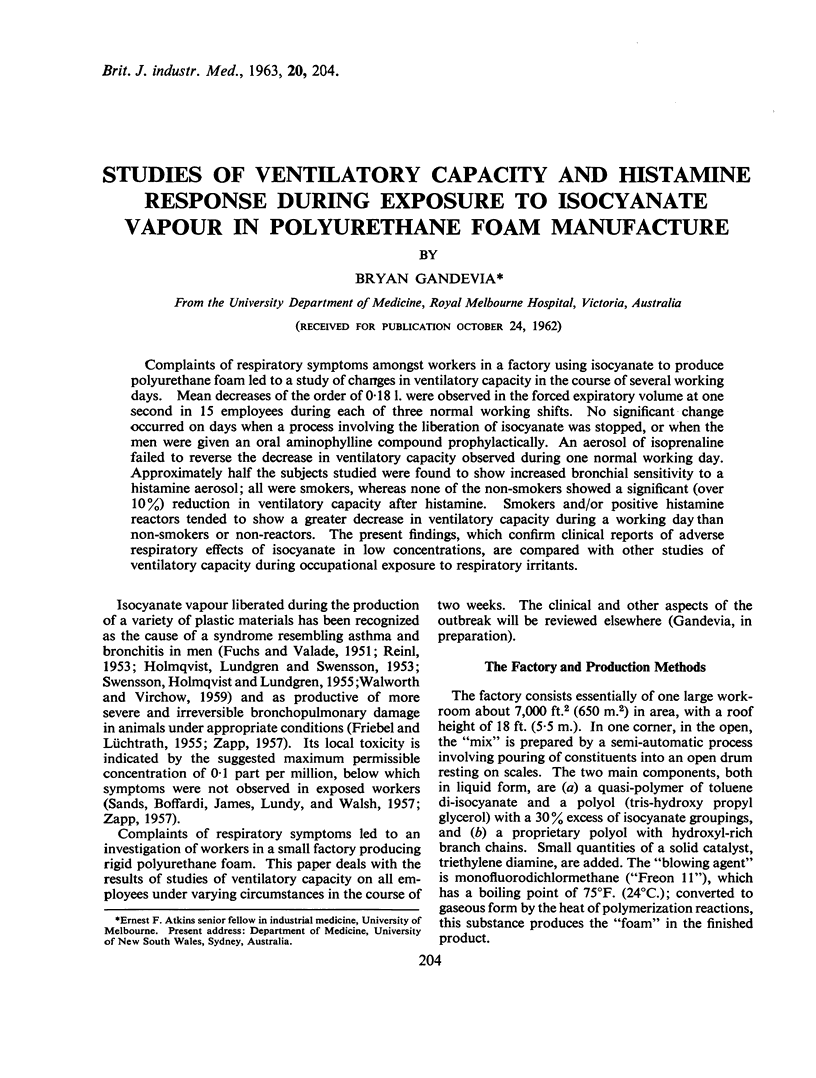
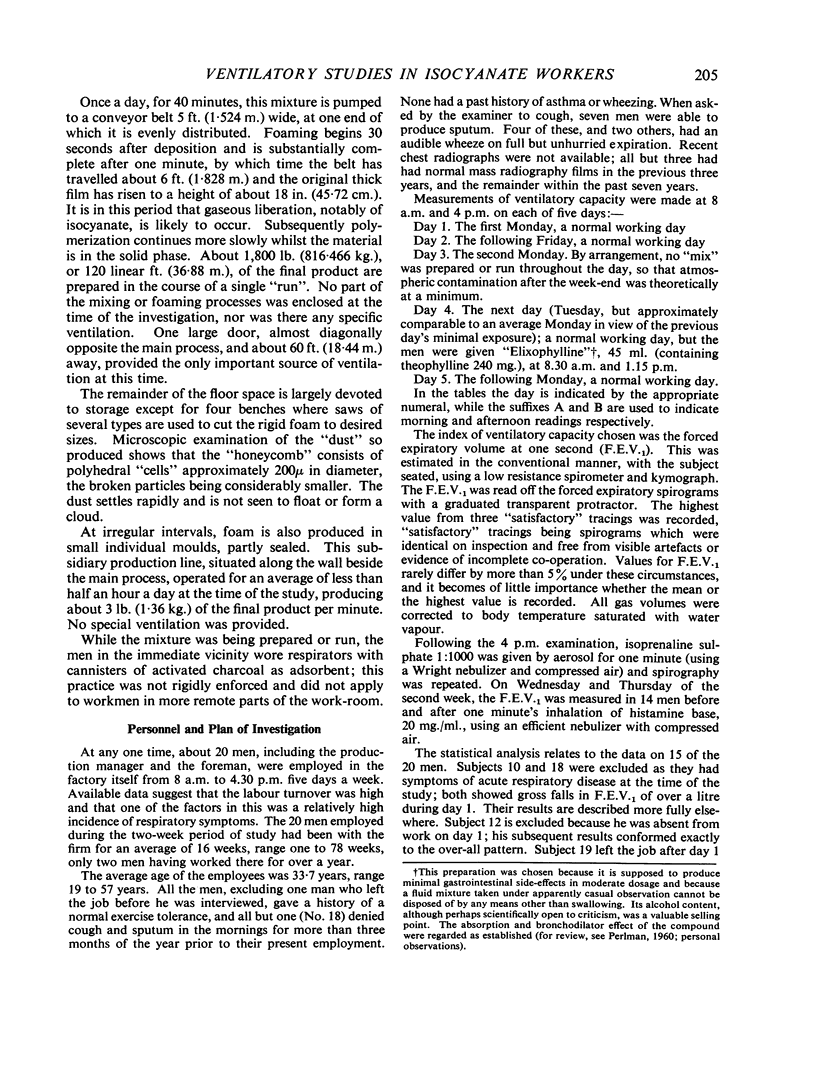
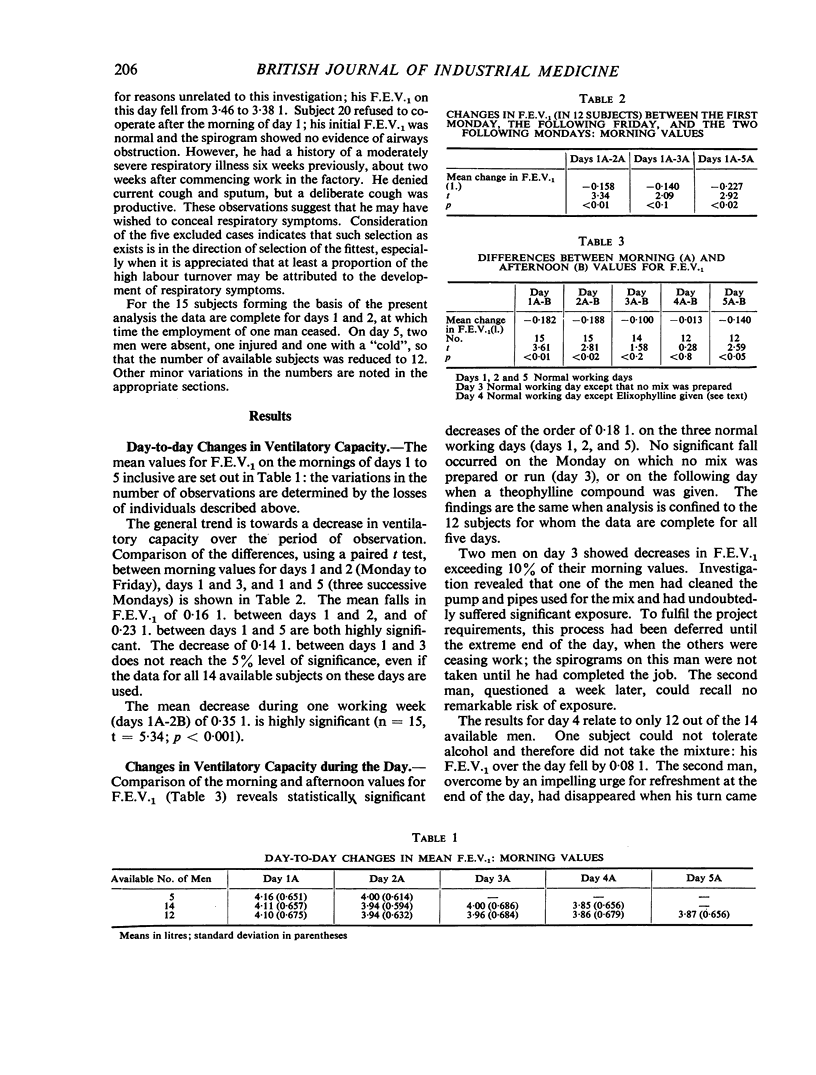
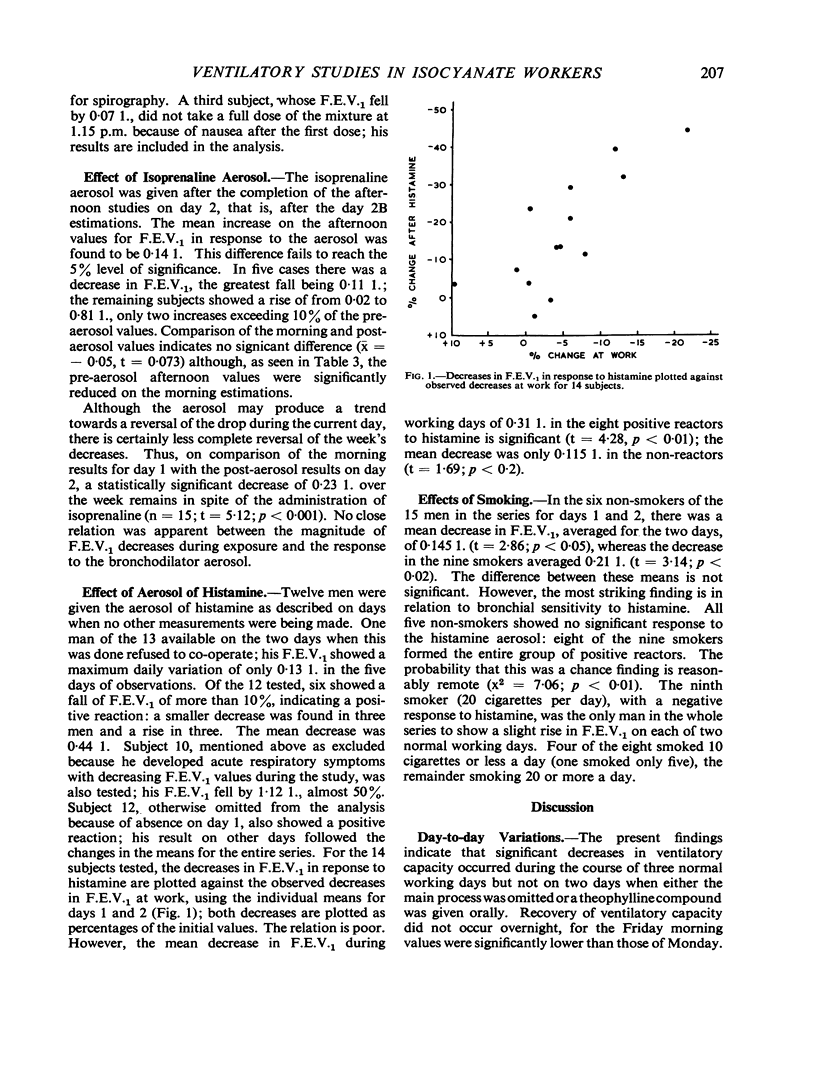
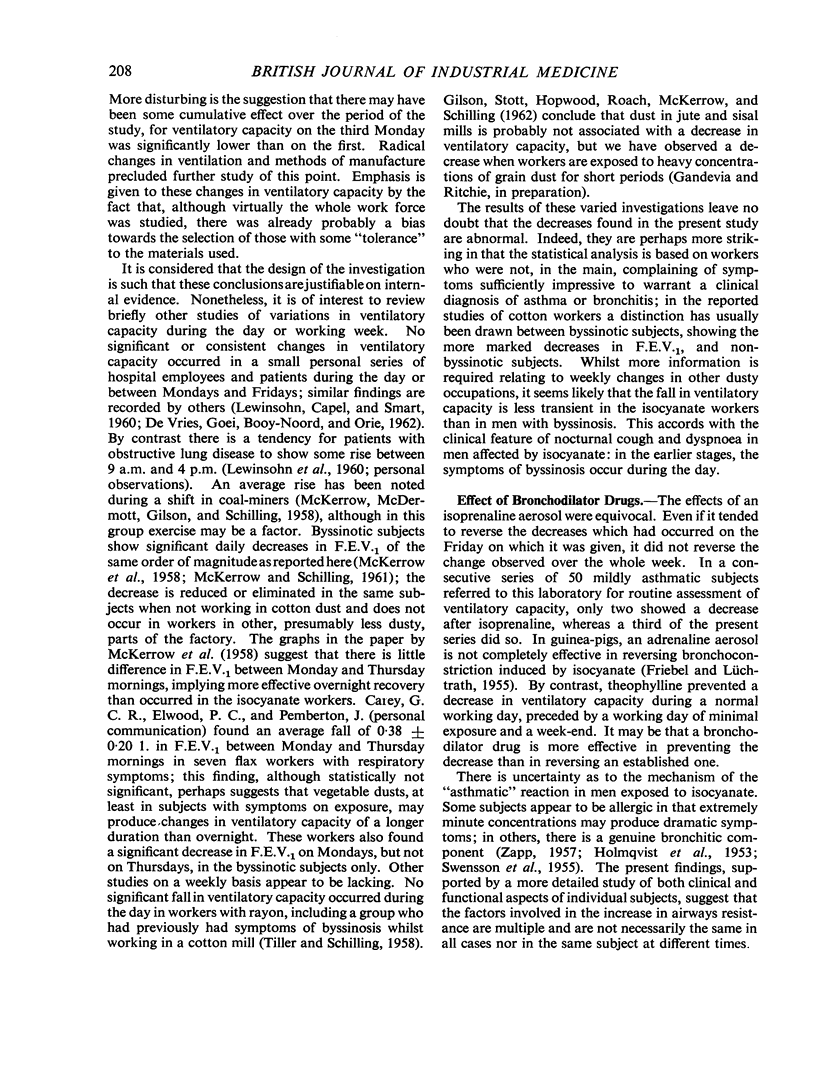
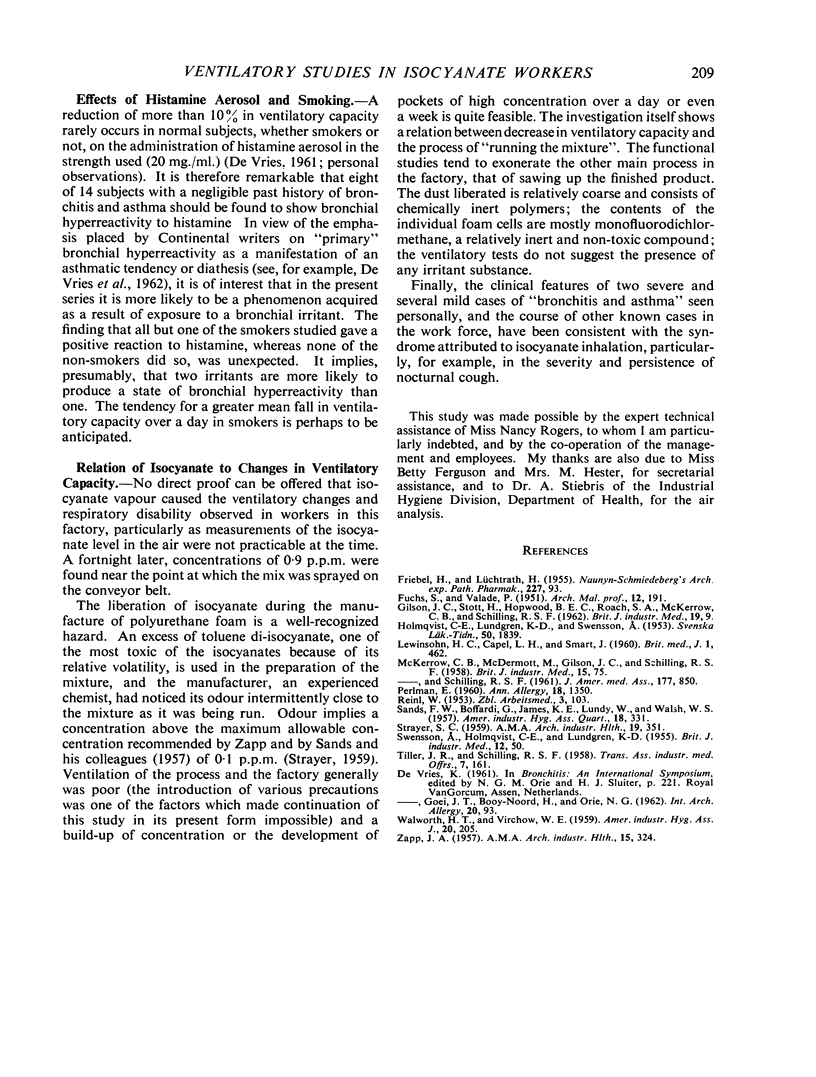
Selected References
These references are in PubMed. This may not be the complete list of references from this article.
- FUCHS S., VALADE P. Etude clinique et expérimentale sur quelques cas d'intoxication par le desmodur T (diisocyanate de toluylène 1-2-4 et 1-2-6). Arch Mal Prof. 1951;12(2):191–196. [PubMed] [Google Scholar]
- GILSON J. C., STOTT H., HOPWOOD B. E., ROACH S. A., McKERROW C. B., SCHILLING R. S. Byssinosis: the acute effect on ventilatory capacity of dusts in cotton ginneries, cotton, sisal, and jute mills. Br J Ind Med. 1962 Jan;19:9–18. doi: 10.1136/oem.19.1.9. [DOI] [PMC free article] [PubMed] [Google Scholar]
- HOLMQVIST C. E., LUNDGREN K. D., SWENSSON A. Besvär från andningsvägarna orsakade av polyisocyanatplaster. Sven Lakartidn. 1953 Sep 4;50(36):1839–1848. [PubMed] [Google Scholar]
- McKERROW C. B., McDERMOTT M., GILSON J. C., SCHILLING R. S. Respiratory function during the day in cotton workers: a study in byssinosis. Br J Ind Med. 1958 Apr;15(2):75–83. doi: 10.1136/oem.15.2.75. [DOI] [PMC free article] [PubMed] [Google Scholar]
- PERLMAN E. Hydroalcoholic theophylline preparation (Elixophyllin) in the management of bronchial asthma. Ann Allergy. 1960 Dec;18:1350–1358. [PubMed] [Google Scholar]
- SANDS F. W., BOFFARDI G., JAMES K. E., LUNDY W., WALSH W. S. Toluene diisocyanate; engineering and medical control of exposures in polyurethane foam manufacturing. Am Ind Hyg Assoc Q. 1957 Dec;18(4):331–334. doi: 10.1080/00968205709343516. [DOI] [PubMed] [Google Scholar]
- WALWORTH H. T., VIRCHOW W. E. Industrial hygiene experiences with toluene diisocyanate. Am Ind Hyg Assoc J. 1959 Jun;20(3):205–210. doi: 10.1080/00028895909343698. [DOI] [PubMed] [Google Scholar]
- de VRIES, GOEI J. T., BOOY-NOORD H., ORIE N. G. Changes during 24 hours in the lung function and histamine hyperreactivity of the bronchial tree in asthmatic and bronchitic patients. Int Arch Allergy Appl Immunol. 1962;20:93–101. doi: 10.1159/000229248. [DOI] [PubMed] [Google Scholar]


